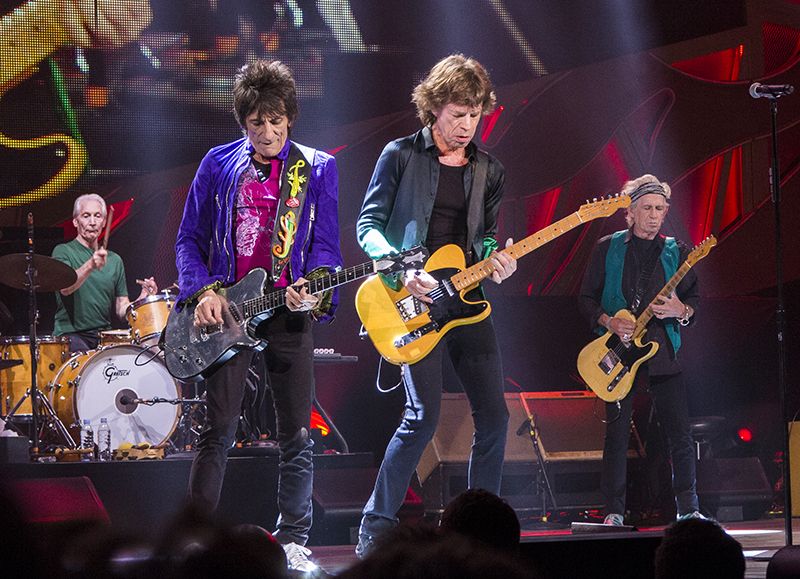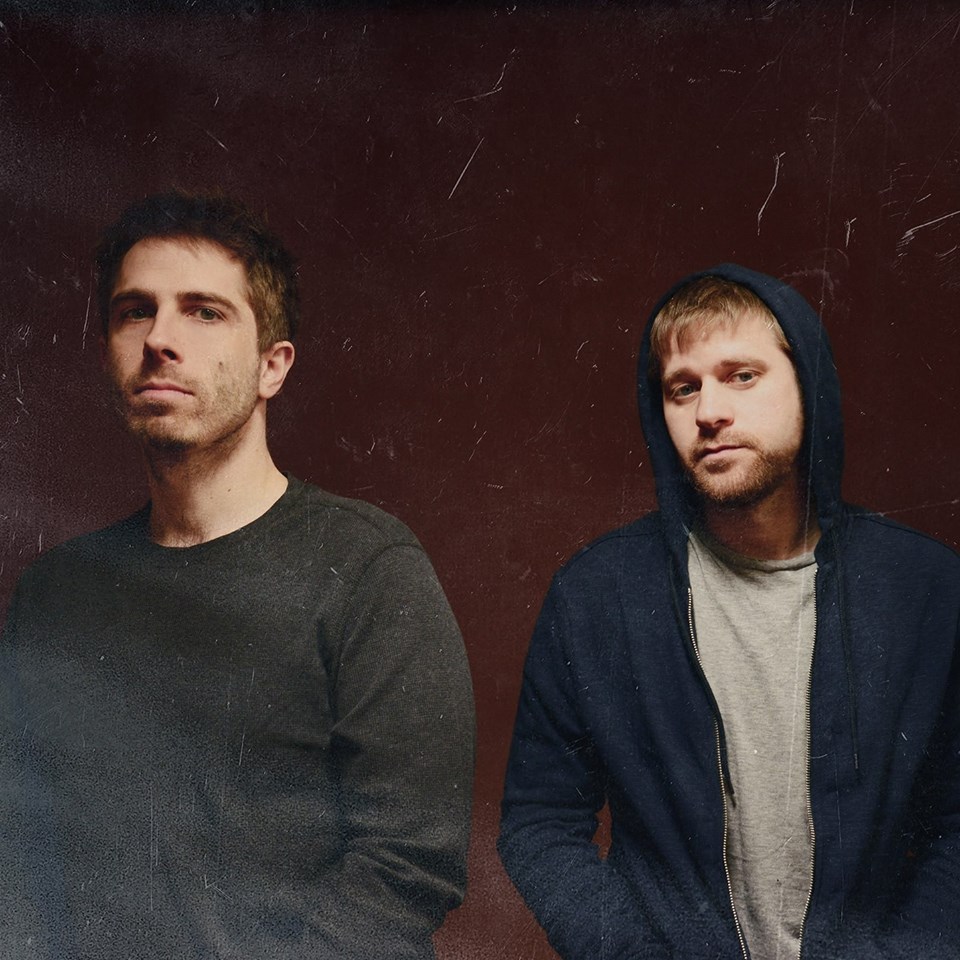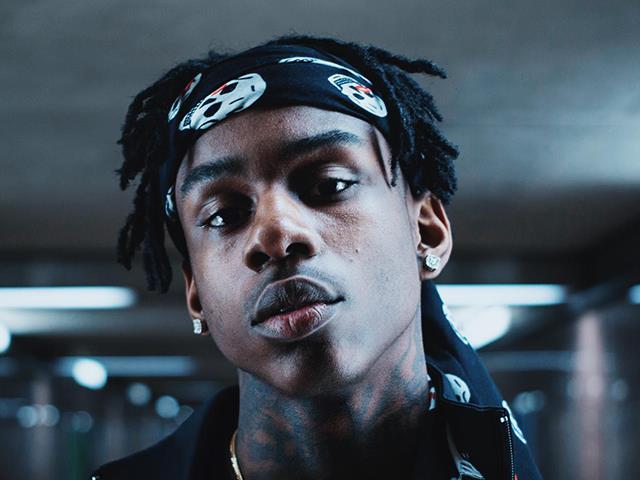The Rolling Stones in Cardiff: Icons Still Perform Like the Glory Days
From the minute I stepped off the train in Cardiff, I was confused.
European train transportation is confusing enough for an American to understand, but despite being greeted by signs written only in the strange Welsh language and trying to decipher the thick accents, one thing was undeniably certain: the Rolling Stones were in town.
Walking out of the terminal, I was immediately met with The Tongue. The majority of people were wearing t-shirts emblazoned with the infamous Rolling Stones logo, and a small stand peddling tour memorabilia was set up outside of the station. Each arriving person was handed a flyer entitled “Rolling Stones Routes,” showing all of the alternate road detours, because the police were shutting down the main roads circling the vicinity of Principality Stadium. Taxis, we were told, were in extremely short supply. I waited for close to an hour in a growing line for about four or five cabs to pick people up, deliver their passengers, and circle back around to repeat the cycle.
Upon getting to the venue, ticket scalpers grazed the sidewalks surrounding the stadium, which was looming overhead as I walked down the main stretch road that had been blocked off for miles. It felt like the European equivalent of Bourbon Street; people wandered the streets from t-shirt stands to pubs to ticket booths, all dressed in a manner of memorabilia like some sort of rock and roll Mardi Gras.
“Buying or selling,” a scalper snatched the ticket from my hand. I’d been standing too long in the same spot, taking in the scene around me in awe, and I guess he’d assumed I was trying to get his attention. He glanced at my ticket, then back at me with wide eyes. “Guard this with your life,” he said, handing it back before offering a laugh. My ticket proudly read, “Pit A,” and was the embodiment of my birthday and Christmas presents for the next ten years of my life. Pit A,” as I had studied on the stadium map for months, was right up on the fence. As close to Mick Jagger as you could get without being his security guards or close family member. I wasn’t exactly sure how I’d get through without bursting into tears.
Seeing your favorite band live is a good experience; you get to stand in a crowd with hundreds of people who love the same artist as you, depending on how big the audience is. Seeing The Rolling Stones would be a complete different type of experience, especially from the front row. The Rolling Stones, since their debut in the early 60’s, represent the universal force of music as a whole, at least in my humble opinion, and in the United Kingdom, the Stones seem to belong to the whole of the country. On a London bus tour, as we drove by Hyde Park, our guide regaled us with the history of their 1969 Hyde Park show and referred to the band as “our boys.” At The City Arms, the pub directly across from Principality Stadium, this pride would become even more evident. A family from northern England had driven hours to get here. A father and son that had come all the way from Holland nodded politely when I asked if they were excited for the show, although I’m not sure if they understood what I was saying. A guy my age attending university in London had taken the train here with a group of friends; he’d bought me a pint while I’d grilled him on what the Stones meant nowadays, especially to a 20-something, but his girlfriend approached and dragged him away by the t-shirt before he could answer.
All generational passing, international fandom and possible adultery plans aside, the pattern was beginning to reveal itself. If people couldn’t get tickets to a show in their own hometowns, they’d try to get them for the next one, and so on, and so forth. That is, after all, exactly what I’d resorted to when their London show sold out. Cardiff was the only UK show with a few remaining tickets left. The No Filter European tour, starting in the Fall of 2017 in Germany, would see the band combining the blues standards of their 2016 release “Blue and Lonesome” with the well-known hits of the past, with a few b-sides mixed into the setlists as well. The description, however, is completely unparalleled to the actual show itself.
Mick Jagger has the same wild stage presence as he did in the 70’s; he demands attention. Even when your eyes are drawn to the unadulterated cool of Keith Richards, you can’t help but look back to Jagger as he struts down the catwalk, microphone pointed at the audience as he flails his free arm in time to the song. Even his voice has the same rasp, the same drawl, and the same prominence as it did in his glory days, although there is some age to it now. It works to his advantage during songs like “Just Your Fool,” or “Midnight Rambler,” where he sounds like a seasoned bluesman (complete with his incredible harmonica solos). I mentioned how cool Keith Richards is, but the t-shirts and the documentaries don’t prepare you for seeing the storied guitarist onstage. Cigarette after cigarette dangled from his mouth as he played all of his classic riffs. I lost it when he sang “You Got the Silver,” clutching the fence and crying like a baby as I watched my icon sing one of his greatest songs. I was the personification of a British Invasion-era fan, weeping in time to the music. Ron Wood shares similar characteristics, taking the lead guitar and laughing at Richards as they switch parts and riff off of each other. Charlie Watts maintained his role as the effervescent backbone of the group, always steady and poised behind his drum kit.
The setlist of the show was probably the most shocking; they opened with “Street Fighting Man,” which gave way to “It’s Only Rock N’ Roll.” While they did the typical hits, like “You Can’t Always Get What You Want” and “Paint it Black,” where Keith stood proudly at the base of the catwalk and played the infamous riff, they included blues standards like “Just Your Fool” and even threw in a cover of the Bob Dylan song, “Like a Rolling Stone,” just for the hell of it.
When the show ended, I roamed the streets of Cardiff for a while. I’d tried to go back to The City Arms, but due to the massive crowd they’d employed a bouncer out front, who wasn’t buying my American driver’s license. He had assumed, for whatever reason that it was a fake. “Do you wanna see my fucking passport?” I’d asked, before being practically shoved onto the sidewalk. Most of the smaller streets were still shut down, though some of the main roads had opened back up. The town was glowing; restaurants were shut down, pubs and open benches being the only places left for those that had witnessed the Stones to go and revel in the post-concert glory.
Practically in a daze, I coerced an off-duty taxi driver to get me back to my hotel, so I could stare blankly at my computer screen and attempt to write about what I’d just witnessed…but I had nothing. Even now, weeks after the concert, it’s hard to put into words what its like when you get to see one of the greatest living legends of music, especially from the front of a massive stadium. Seeing the Rolling Stones is an event unlike any other, and that’s one of the many unarguable truths of modern music. Jokes about their age and their refusal to stop at any costs are made on an almost daily basis, but if you think about it, they could actually stop at any time they wanted. They could’ve stopped back in the 70s, joining the ranks of the storied rock bands that called it quits before it got too out of control, like The Beatles or Led Zeppelin. But they didn’t. They’re still here, and despite age and the decades of time, they’re still on top of the world.
The next day, I stepped off of the train back in London at Paddington Station. If you’ve never been to Paddington, here’s all you really need to know: people rush by, officials act like they could care less about your endless questions, and you have to pay 25 pence to get into the damn bathrooms. I stood in the corner for a while, trying to figure out how the hell I was supposed to find my way back to the Underground, when a flash of red caught my eye.
A man in a letterman jacket was zipping his backpack up while his wife stood next to him, smiling and chattering away. Emblazoned on her shirt was a yellow image of Keith Richards’ face, the slogan, “Keith for President” encircling the picture. As they turned around to continue on their way, I saw the flash of red. Once again, I was immediately met with The Tongue.
Suddenly, I wasn’t so confused anymore.




